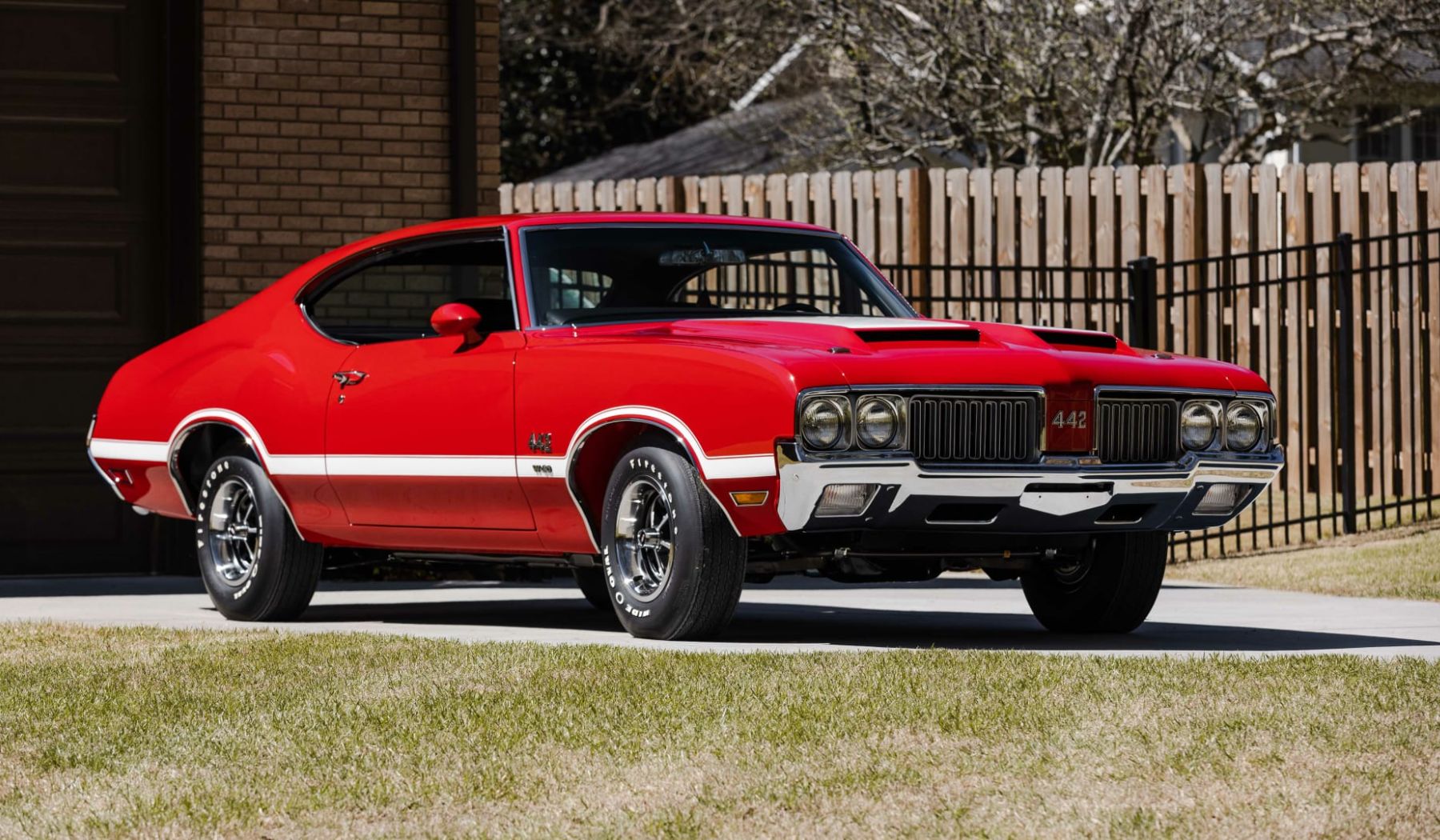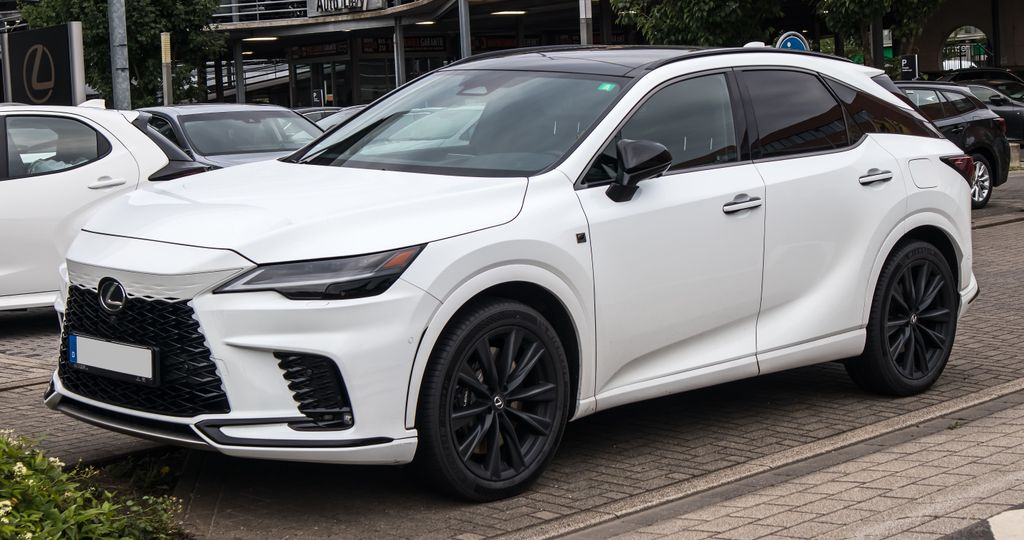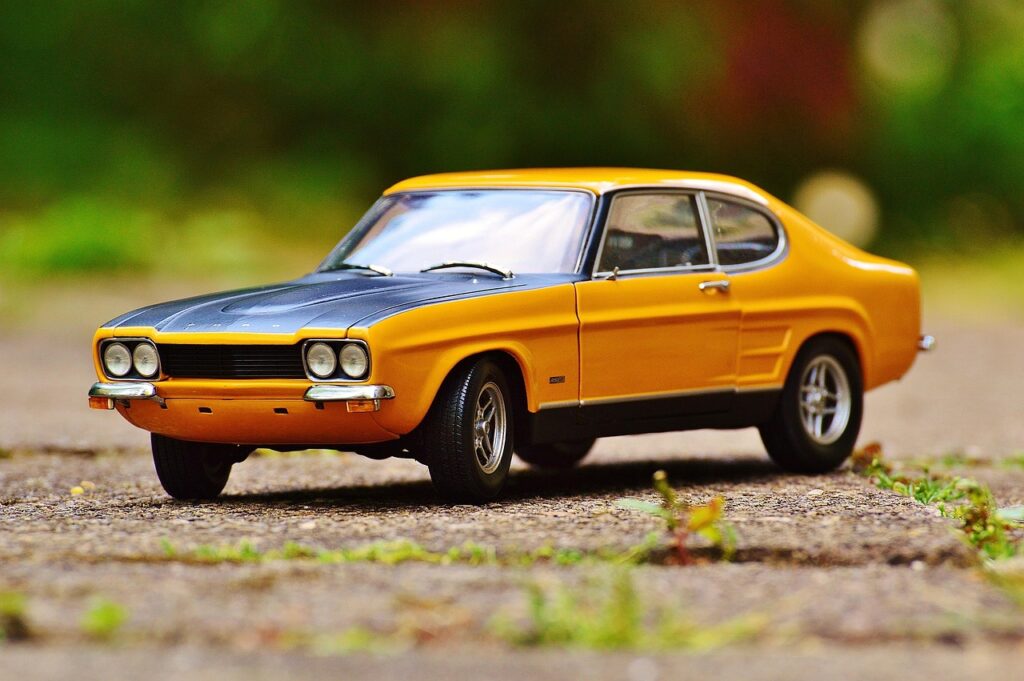
When shopping for an SUV, the purchase price is merely the beginning of your financial commitment. The true cost of ownership extends significantly beyond the dealership, with repair and maintenance expenses often becoming a hidden burden that many owners fail to anticipate. This often leads to unexpected strain on personal finances long after the initial excitement of a new vehicle purchase has worn off.
As these vehicles accumulate mileage and manufacturer warranties expire, a clear divergence emerges in the automotive landscape. Some SUVs gracefully age, maintaining a strong reputation for reliability and featuring parts that are readily available and won’t break the bank. Others, however, regrettably transform into financial sinkholes, demanding frequent, costly repairs that can quickly diminish their perceived value and convenience.
In today’s intricate automotive world, where technology consistently grows more complex and specialized, repair costs vary dramatically across different manufacturers and models. While some brands have proactively prioritized serviceability and part standardization, creating SUVs that remain economically viable to maintain even after significant mileage, others implement proprietary systems and components that necessitate specialized knowledge and tools, thereby significantly increasing both labor costs and part replacement expenses.
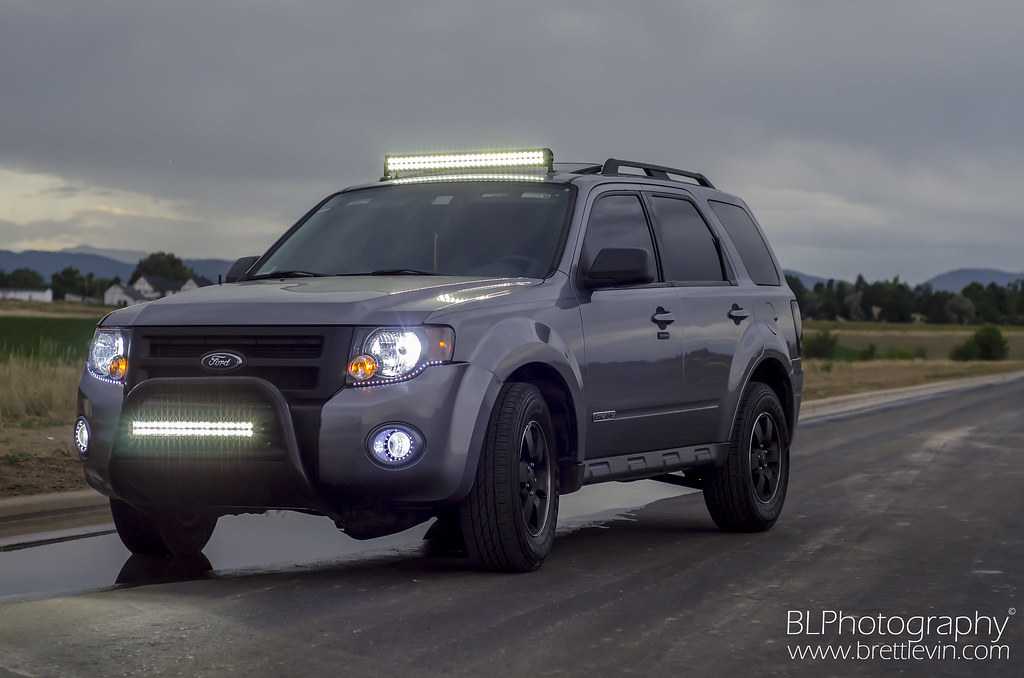
1. **Ford Escape**
The Ford Escape has long been a popular choice in the compact SUV segment, favored for its versatility and generally approachable price point. However, beneath its widespread appeal, there lie well-documented concerns regarding its long-term reliability, particularly when it comes to powertrain integrity. These issues can manifest as significant financial outlays for owners who expect a straightforward, economical ownership experience.
Over the course of a decade, owners of a Ford Escape might find themselves spending an estimated $9,100 on maintenance and repairs. This figure is a critical consideration for any budget-conscious buyer, as it significantly impacts the total cost of ownership. These expenditures are not merely for routine oil changes or tire rotations; they often encompass more substantial, unexpected mechanical failures.
Among the more alarming potential repairs are engine fixes, which can carry a price tag of up to $3,000. Such a cost represents a substantial financial hit, especially if it occurs outside of warranty coverage. Engine problems are not only expensive but can also lead to significant downtime for the vehicle, disrupting daily routines and potentially incurring additional costs like rental cars.
Beyond the engine, the Ford Escape’s infotainment system can also be a source of unexpected expenses. Repairs for these advanced electronic components may add another $300 to $1,000 to an owner’s total repair bill. While perhaps not as critical as engine issues, a malfunctioning infotainment system can detract significantly from the driving experience and the modern conveniences that draw many buyers to new SUVs.
Considering these potential costs, prospective Ford Escape buyers should carefully weigh the initial purchase price against the likely long-term financial commitment required for maintenance and repairs. Opting for a model with a stronger reputation for mechanical durability can save thousands of dollars and countless headaches over a decade of ownership.
Car Model Information: 2024 Ford Escape Active
Name: Ford Escape
Caption: 2021 Escape Hybrid (US)
Manufacturer: Ford Motor Company
Aka: Unbulleted list
Production: 2000–present
ModelYears: 2001–present
Class: Compact crossover SUV
BodyStyle: SUV
Layout: Unbulleted list
Predecessor: Nissan Terrano II
Successor: Ford Territory (China)
Categories: 2010s cars, 2020s cars, All-wheel-drive vehicles, All Wikipedia articles written in American English, All articles with dead external links
Summary: The Ford Escape is a compact crossover SUV manufactured and marketed by the Ford Motor Company since the 2001 model year. The first Ford SUV derived from a car platform, the Escape fell below the Ford Explorer in size; the Escape was sized between the Ford EcoSport and Ford Edge. The 2005 model year Ford Escape Hybrid was the first hybrid-electric vehicle from Ford, and the first hybrid produced as an SUV.
The first two generations of the Escape used the Ford CD2 platform (jointly developed with Mazda), leading to the release of the rebadged variants, the Mazda Tribute and Mercury Mariner; as with the Escape, both the Tribute and Mariner were marketed in North America (the Mariner was never marketed in Canada). In Europe, the Escape was initially branded as the Ford Maverick from 2001 to 2008 (replacing a Nissan-produced SUV).
Under the mid-2000s “One Ford” globalization strategy, the third and fourth-generation designs of the Escape have been unified with the Ford Kuga, designed by Ford of Europe. Sharing a common body and chassis underpinnings (and several engines), the Escape and Kuga are manufactured in their home markets. As with previous generations, the fourth-generation Escape is offered with gasoline, hybrid, and plug-in hybrid options. Outside of North America, the Ford Escape is marketed in Australia, China, and Taiwan.
In August 2025, it was announced that Ford will be discontinuing the Escape after the 2026 model year.
Get more information about: Ford Escape
Buying a high-performing used car >>>
Brand: Ford Model: Escape
Price: $20,820 Mileage: 47,663 mi.
Read more about: From Anemic to Awkward: Unmasking 15 Muscle Cars That Truly Missed the Mark – And Why We Can’t Forget Them
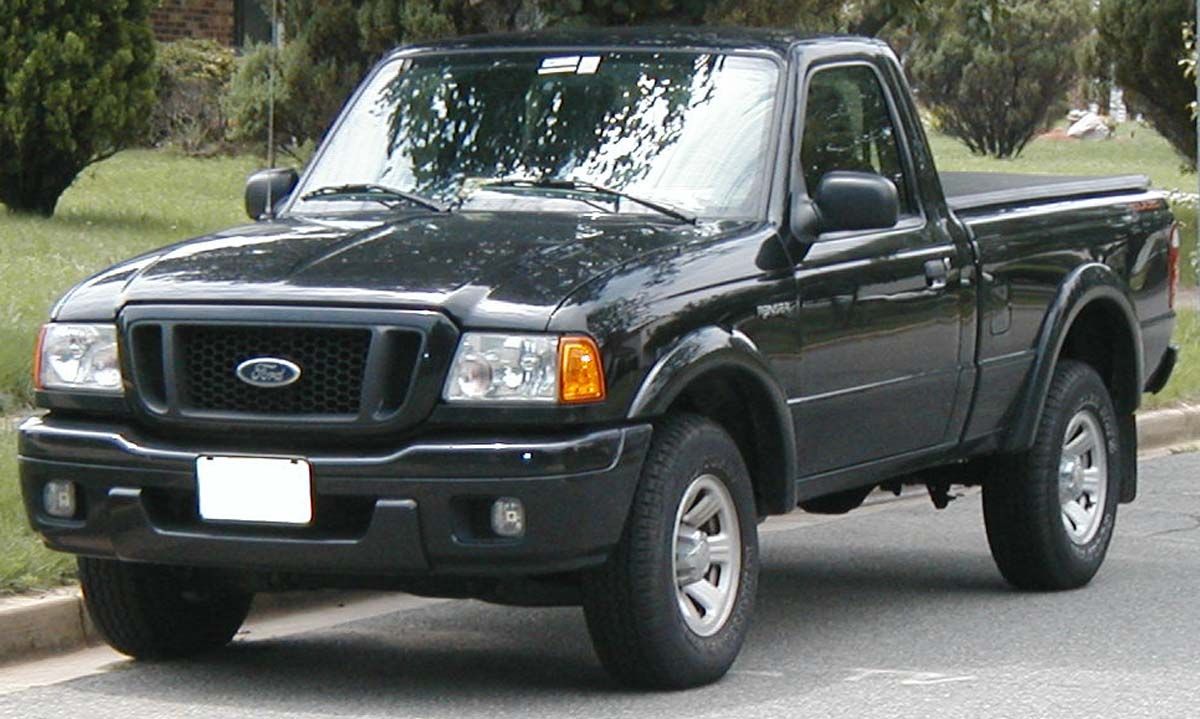
2. **Ford Edge**
The Ford Edge is often praised for offering a comfortable ride, a spacious interior, and a generally robust appearance, making it an attractive option for families and individuals seeking a mid-size SUV. However, an increasing number of owners have reported significant engine issues that can transform its comfortable ride into a source of considerable financial stress. These problems often emerge unexpectedly, presenting substantial repair bills.
These engine problems are not merely minor inconveniences; they can be critical failures that necessitate expensive and extensive repair work. The unpredictability of such occurrences makes budgeting for long-term ownership particularly challenging. What might initially seem like a good value purchase can quickly escalate in cost when these mechanical issues arise.
In a particularly stark illustration of these potential pitfalls, one driver reported facing an $8,600 engine replacement shortly after purchasing their Ford Edge. This specific incident underscores the potential for truly substantial, unexpected expenses that can arise with this model. Such a repair cost can often be a significant fraction of the vehicle’s market value, especially for an older or used model.
Such potential problems highlight the critical importance of factoring in reliability and potential repair costs when evaluating the Ford Edge. A comfortable interior and sleek design can quickly lose their appeal if overshadowed by the specter of a five-figure repair bill. Shoppers are advised to look into detailed reliability reports and consider extended warranties carefully.
Potential buyers should also consider pre-purchase inspections by independent mechanics specializing in Ford vehicles. This proactive step can sometimes identify nascent issues before they become catastrophic, providing a clearer picture of the vehicle’s health and helping to mitigate the risk of encountering these significant engine problems down the line.
Car Model Information: 2012 Ford Edge Limited
Name: Ford Edge
Caption: 2019 Ford Edge SEL EcoBoost AWD (US)
Manufacturer: Ford Motor Company
Production: 2006–present
ModelYears: 2007–2024 (CAN/US),2016–2021 (Europe),2015–2019 (UK)
Class: Mid-size crossover SUV
BodyStyle: SUV
Layout: Front-engine, front-wheel-drive layout
Categories: 2010s cars, 2020s cars, All-wheel-drive vehicles, All articles with unsourced statements, Articles with short description
Summary: The Ford Edge is a crossover SUV manufactured and marketed by the Ford Motor Company introduced for the 2007 model year as the first mid-size CUV marketed by Ford in North America. Deriving its name from a trim package of the Ford Ranger, the Ford Edge is positioned between the Ford Escape and the Ford Explorer within the Ford product line.
Production of the North American Edge ended in April 2024, with the third generation Edge (dubbed the Edge L), launched in 2023, being produced and sold exclusively in China.
Sharing its underpinnings with the Ford Fusion sedan, Ford also marketed a rebadged variant as the Lincoln MKX (since 2019, the Lincoln Nautilus). The second generation is also marketed by Ford of Europe, positioned between the Kuga (Escape) and the Explorer PHEV.
Manufacturing of the first two generations took place at Oakville Assembly (Oakville, Ontario) alongside the Nautilus.
Get more information about: Ford Edge
Buying a high-performing used car >>>
Brand: Ford Model: Edge
Price: $9,590 Mileage: 102,543 mi.
Read more about: Navigating the Automotive Minefield: 12 Cars That Could Cost You a Fortune in Repairs
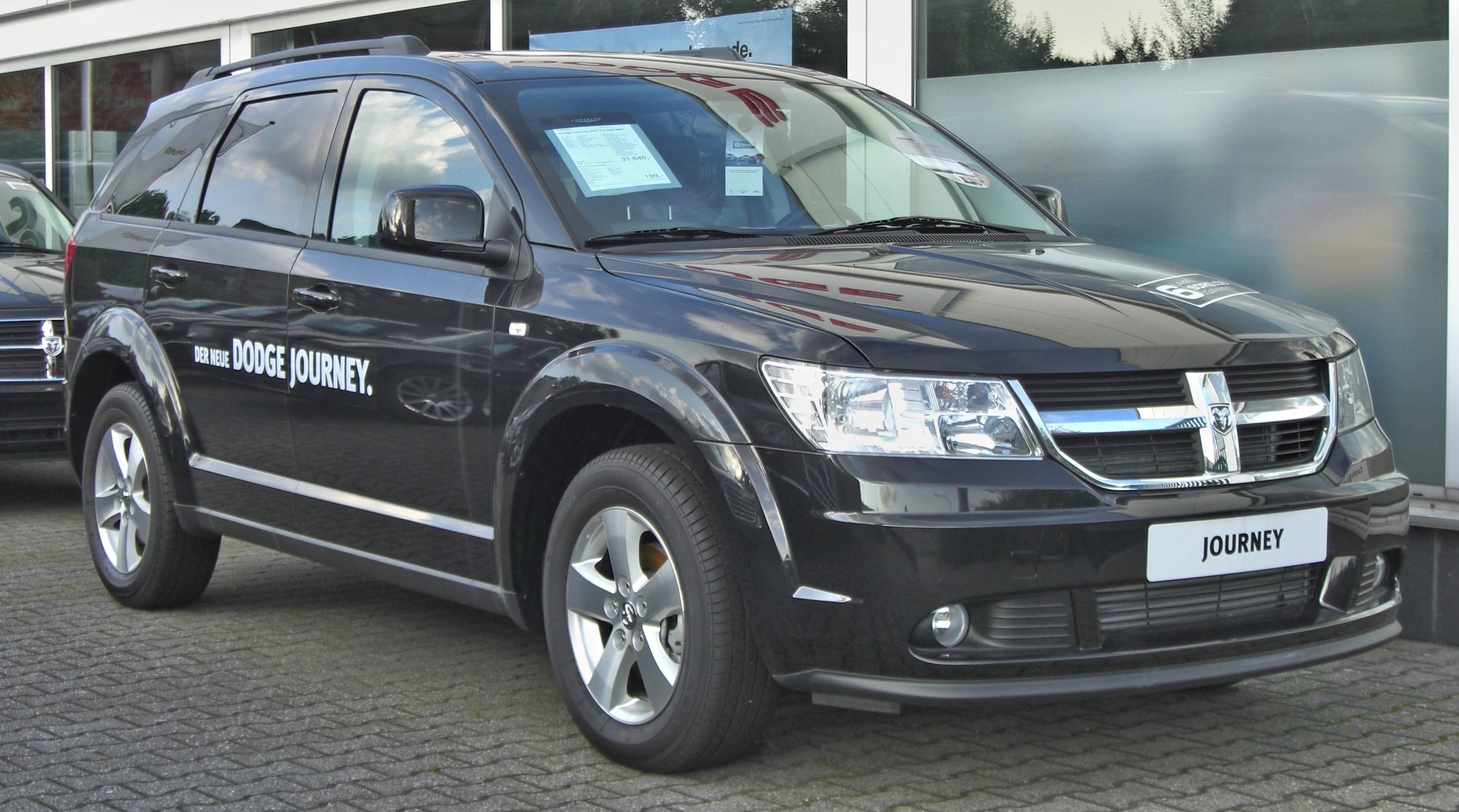
3. **Dodge Journey**
The Dodge Journey has historically positioned itself as an accessible entry point into the SUV market, often appealing to buyers looking for a budget-friendly family hauler. Its lower purchase price and available third-row seating have attracted many, but the long-term cost of ownership frequently tells a different story once reliability issues begin to surface. This SUV has faced persistent criticism regarding its overall dependability.
Throughout its production run, the Dodge Journey has been a frequent subject of reliability concerns, which often translate directly into higher-than-expected maintenance costs. These concerns are not isolated incidents but rather a recurring theme in owner reports and industry analyses, indicating systemic issues that can affect various components of the vehicle.
Owners of the Dodge Journey may find themselves facing frequent repairs, which can quickly erode the initial savings gained from its lower purchase price. What begins as an economical choice can, over time, become a drain on finances, as regular visits to the service center add up. These repairs can range from minor electrical glitches to more significant mechanical failures.
These frequent repair needs mean that the Dodge Journey’s maintenance costs over time tend to be significantly higher than expected for a vehicle in its class. The cumulative effect of these expenditures can make the Journey a surprisingly expensive vehicle to own in the long run, challenging the notion that its initial affordability translates to economical ownership.
Prospective buyers must look beyond the attractive sticker price and consider the documented history of reliability concerns. Researching long-term maintenance data and owner reviews is crucial to understand the true financial commitment required. A vehicle with a lower upfront cost can prove to be a false economy if it demands constant, expensive attention in the repair shop.
Car Model Information: 2018 Dodge Journey SE
Name: Dodge Journey
Caption: 2012 Dodge Journey
Manufacturer: Dodge
Aka: Fiat Freemont,Dodge JC (Japan),Dodge JCUV (China)
Production: 2008–2020
ModelYears: 2009–2020,2011–2015 (Freemont)
Assembly: Toluca, Mexico
Designer: Ryan Nagode
Class: Mid-size crossover SUV
BodyStyle: SUV
Platform: Mitsubishi GS platform
Related: Chrysler 200,Chrysler Sebring,Dodge Avenger
Layout: Front-engine, front-wheel-drive layout
Engine: ubl
Transmission: Ultradrive#40TES/41TES
Wheelbase: 2890 mm
Abbr: on
Order: flip
Length: 192.4 in
Width: 72.2 in
Height: 66.6 in
Weight: 3818 lb
Predecessor: Fiat Ulysse,Fiat Croma
Successor: Dodge Journey (2021)
Categories: 2010s cars, 2020s cars, All-wheel-drive vehicles, All articles with dead external links, All articles with unsourced statements
Summary: The Dodge Journey is a mid-size crossover SUV manufactured and marketed by Fiat Chrysler Automobiles’ Dodge brand for model years 2009 to 2020 over a single generation, with a facelift for the 2011 model year. The Journey was styled by Ryan Nagode, and was marketed globally in both left- and right-hand drive, including as the Fiat Freemont.
Internally identified as the JC49, the Journey shares FCA’s global D-segment platform with the Dodge Avenger and a nearly identical wheelbase to the outgoing short-wheelbase (SWB) Dodge Caravan.
Having debuted at the 2007 Frankfurt Motor Show, the Journey subsequently appeared at the 2009 Frankfurt Motor Show. All models were manufactured in Mexico at FCA’s Toluca Assembly facility, with just over 1.1 million manufactured before production ended in 2020.
Get more information about: Dodge Journey
Buying a high-performing used car >>>
Brand: Dodge Model: Journey
Price: $10,995 Mileage: 134,942 mi.
Read more about: Navigating the Automotive Minefield: 12 Cars That Could Cost You a Fortune in Repairs
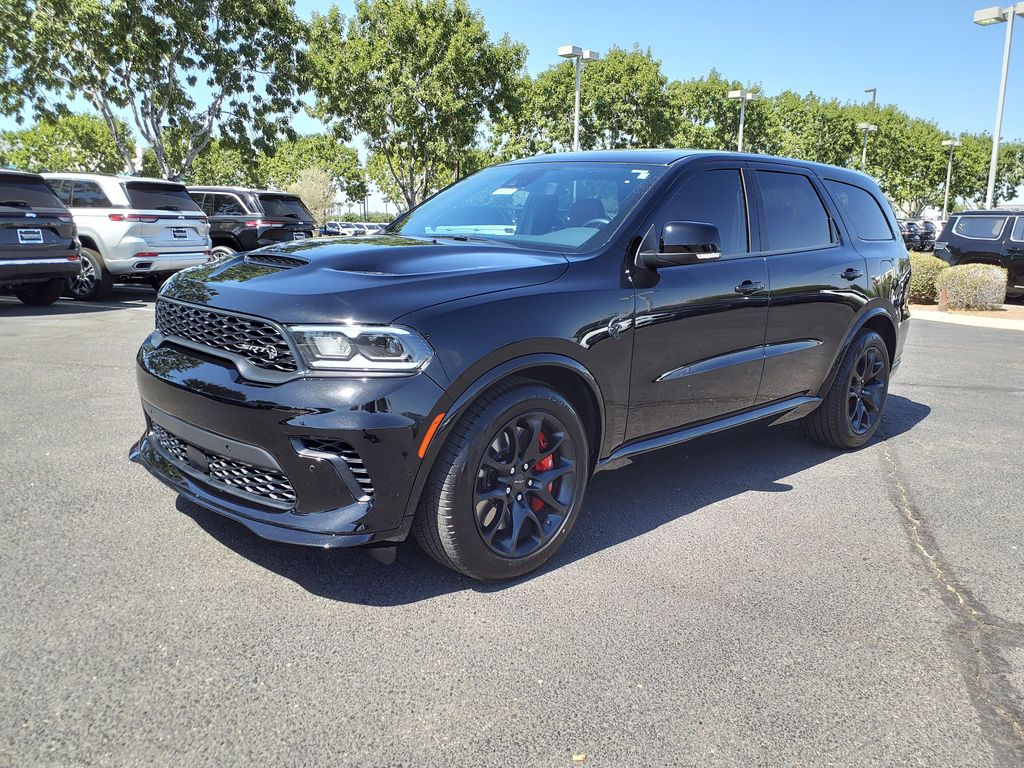
4. **Dodge Durango**
The Dodge Durango stands out in the SUV market for its spacious interior and an array of powerful engine options, appealing to those who desire both utility and performance. It offers a commanding presence and capable towing, making it a favorite for larger families or individuals with demanding hauling needs. However, the ownership experience, particularly in terms of maintenance, can be surprisingly taxing on the wallet.
Maintaining a Dodge Durango can prove to be quite costly, often exceeding the average expenses associated with comparable SUVs. This financial burden extends beyond routine service, encompassing a range of potential repairs that can emerge as the vehicle ages. Buyers are often initially drawn by its power and size, without fully accounting for these escalating long-term costs.
Over a period of ten years, owners of a Dodge Durango might expect to spend approximately $10,189 on maintenance and repairs. This figure is not only substantial on its own but also represents a significant premium when compared to other SUVs. Specifically, this amount is about $1,309 more than the average maintenance and repair cost for SUVs across the market.
This higher expenditure is compounded by a notable risk of significant mechanical failures. There is a substantial 30.99% chance of needing a major repair during the first decade of ownership. A “major repair” typically implies an expensive, critical component failure that can sideline the vehicle and require significant financial investment to fix.
Such a high probability of a major repair makes the Durango a vehicle that requires careful financial planning from its owners. The combination of elevated routine maintenance costs and a significant chance of a large, unexpected expense means that buyers should budget accordingly. Informed consumers will weigh the allure of the Durango’s performance against its documented long-term financial commitments.
Car Model Information: 2012 Dodge Durango Crew
Name: Dodge Durango
Manufacturer: Dodge
Production: 1997–present
Class: Mid-size,SUV
Predecessor: Dodge Ramcharger,Dodge Town Panel and Town Wagon
Related: Dodge Dakota
Layout: Front-engine, rear-wheel-drive layout,automobile layout
Caption: Dodge Durango GT 2021
ModelYears: 1998–2009,2011–present
Categories: 2000s cars, 2010s cars, 2020s cars, All-wheel-drive vehicles, All accuracy disputes
Summary: The Dodge Durango is a mid-size SUV produced by Dodge starting with the 1998 model year. The first two generations were very similar in that both were based on the Dodge Dakota and Dodge Ram, both featured a body-on-frame construction and both were produced at the Newark Assembly Plant in Newark, Delaware through the 2009 model year.
The third-generation Durango began with the 2011 model year. It is built on the same platform as the Jeep Grand Cherokee, features unibody construction, and has been assembled at the Jefferson North Assembly Plant in Detroit, Michigan, since late 2010.
Each generation had options for different engine sizes and power ratings, with different transmissions also. In 2009 a hybrid variant was introduced, but ended quickly with the second generation Durango. From 2007 to 2009 the Durango was available as the Chrysler Aspen from Chrysler. Over two million Durangos have been sold since it was introduced in 1998.
Get more information about: Dodge Durango
Buying a high-performing used car >>>
Brand: Dodge Model: Durango
Price: $7,995 Mileage: 161,016 mi.
Read more about: Behind the Badges: Uncovering the Shared DNA of 10 Automotive Icons Built in the Same Factories
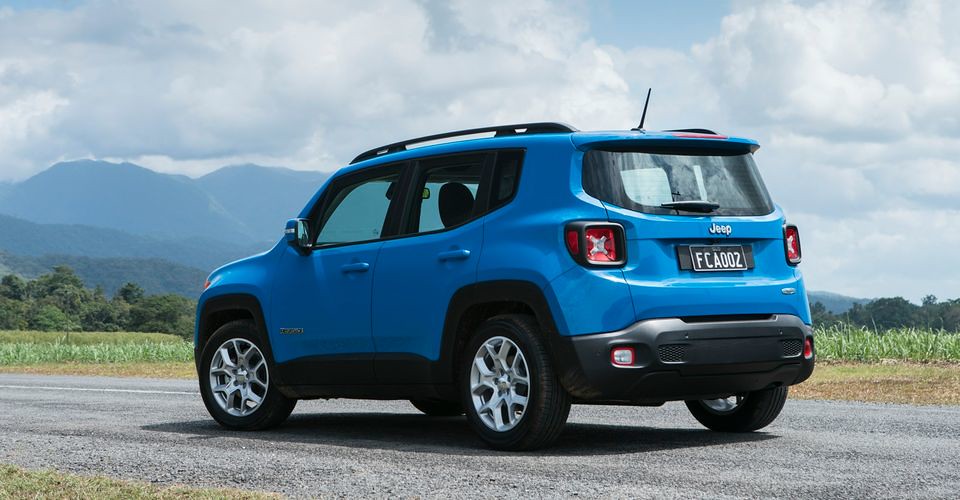
5. **Jeep Renegade**
The Jeep Renegade distinguishes itself in the compact SUV segment with a distinctive design that hints at its rugged brand heritage, while also offering urban agility. Its unique styling and recognizable grille appeal to those looking for a small SUV with character. However, this distinctive package regrettably comes paired with a less appealing trait: high maintenance costs that can surprise unsuspecting owners.
Over the course of a decade, owners of a Jeep Renegade can expect to pay around $10,083 in maintenance and repairs. This figure is a critical piece of information for prospective buyers, as it significantly impacts the vehicle’s long-term financial viability. Such a sum can quickly offset any perceived savings from its compact size or initial purchase price.
This approximate decade-long expenditure places the Renegade significantly above the average for SUVs in terms of maintenance expense. Owners are likely to pay around $1,203 more than the typical SUV owner over the same period. This discrepancy highlights a fundamental financial characteristic that sets the Renegade apart from more economical competitors.
Furthermore, the Jeep Renegade carries a notable risk of requiring significant repairs. There is a 31.13% chance of needing a major repair during the first ten years of ownership. This percentage indicates a considerable likelihood that owners will face at least one substantial, potentially budget-stretching mechanical issue within the vehicle’s lifespan.
A “major repair” in this context refers to a costly and often unexpected fix, such as significant engine, transmission, or electrical system work. These are the kinds of issues that can not only drain a savings account but also leave an owner without their primary mode of transportation for extended periods. Prudent buyers will account for this elevated risk when considering the Renegade.
Car Model Information: 1993 Jeep Wrangler Renegade
Name: Jeep Renegade
Manufacturer: Jeep
Production: 2014–present
ModelYears: 2015–2023 (US & Canada),2015–present (Mexico)
Assembly: ubl
Designer: Jeremy Glover and Ian Hedge
Class: Subcompact crossover SUV
BodyStyle: SUV
Layout: Front-engine, front-wheel-drive layout
Platform: GM Fiat Small platform
Related: Fiat 500X,Fiat 500L,Fiat Tipo (2015),Fiat Toro
Engine: ubl
Motor: 45 kW
Abbr: on
Transmission: Fiat Powertrain Technologies,Fiat Powertrain Technologies,Fiat Powertrain Technologies,Fiat Powertrain Technologies,Aisin,Fiat Powertrain Technologies,ZF Friedrichshafen
Battery: lithium-ion battery
Drivetrain: PHEV
Wheelbase: 101.2 in
Length: 166.6 in
Width: 71.1 in
Height: 66.5 in
Weight: convert
Sp: us
Categories: 2020s cars, All-wheel-drive vehicles, All articles with bare URLs for citations, Articles with PDF format bare URLs for citations, Articles with bare URLs for citations from August 2024
Summary: The Jeep Renegade is a subcompact crossover SUV produced by Stellantis under their Jeep marque. It was first shown to the public in March 2014 at the Geneva Motor Show and production started in late August of that year. The Renegade was the smallest vehicle currently marketed by Jeep, until the arrival of the Avenger. It slots between the Avenger and the Compass. It is based on the FCA Small Wide 4×4 platform, which is also shared with other FCA models, including those from Fiat and Alfa Romeo brands.
The Renegade comes as standard with front-wheel drive, with optional four-wheel drive systems Active Drive I and Active Drive Low, both of which are paired with Jeep’s Selec-Terrain System.
Get more information about: Jeep Renegade
Buying a high-performing used car >>>
Brand: Jeep Model: Renegade
Price: $15,995 Mileage: 82,476 mi.
Read more about: Behind the Badges: Uncovering the Shared DNA of 10 Automotive Icons Built in the Same Factories
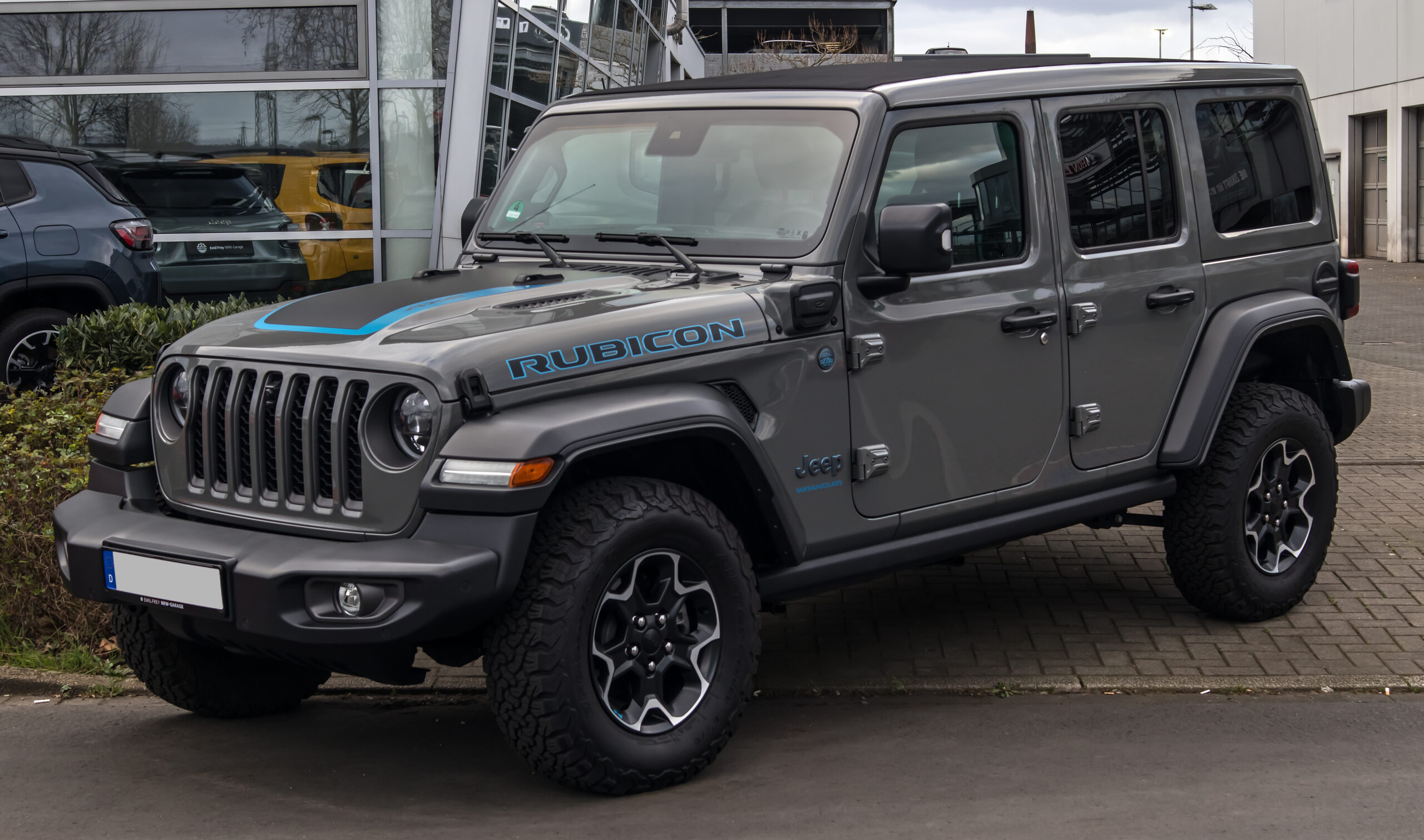
6. **Jeep Wrangler**
The iconic Jeep Wrangler is celebrated globally for its unparalleled rugged off-road capabilities and distinctive, utilitarian design. It represents a lifestyle choice for many, promising adventure and freedom beyond paved roads. While its go-anywhere prowess is undeniable, this specialized performance and unique engineering invariably come with a notable cost when it pertains to ongoing maintenance and repairs.
Maintaining a vehicle designed for extreme conditions naturally involves more complex components and potentially more frequent attention. The Wrangler’s robust construction and specialized drivetrain, essential for its off-road prowess, can also contribute to a higher cost of ownership compared to more conventional SUVs. This is an important consideration for buyers primarily seeking a daily driver.
Over a ten-year period, the average cost for maintenance and repairs on a Jeep Wrangler hovers around $10,662. This figure underscores the financial commitment required to keep this capable vehicle in prime operating condition. It’s a reflection of both the parts needed for its unique systems and the labor involved in servicing them.
Common issues that contribute to these substantial costs include specific component failures. For instance, water pump replacements are a frequently reported concern among Wrangler owners, often costing about $700 per incident. Such repairs, while not catastrophic, add up over time and contribute to the overall elevated maintenance profile.
Another recurring issue that can impact owners financially is oil leak repairs, which can run up to $1,000. These leaks, if left unaddressed, can lead to more serious mechanical problems, further emphasizing the need for timely and costly interventions. Buyers interested in the Wrangler should be prepared for these potential and often significant expenses, budgeting for them as part of the overall ownership experience.
Continuing our deep dive into the real costs of SUV ownership, this section shifts its focus to the luxury and performance segment, where high-end engineering and sophisticated features often translate into significantly higher long-term expenses. These vehicles, while offering unparalleled comfort, technology, and driving dynamics, frequently demand specialized attention and proprietary parts, making them notorious for draining wallets once the initial factory warranty periods conclude. Understanding these financial pitfalls is crucial for any discerning buyer considering an upscale SUV.
Car Model Information: 2019 Jeep Wrangler Sport
Name: Jeep Wrangler
Caption: Jeep Wrangler Unlimited, Sahara edition
Manufacturer: Jeep
Class: Compact SUV
Production: 1986–present
Predecessor: Jeep CJ
Layout: Front-engine, rear-wheel-drive layout,rear-wheel drive
Chassis: Body-on-frame
Related: AIL Storm
Categories: 1980s cars, 1990s cars, 2000s cars, 2010s cars, All-wheel-drive vehicles
Summary: The Jeep Wrangler is a series of compact and mid-size four-wheel drive off-road SUVs manufactured by Jeep since 1986, and currently in its fourth generation. The Wrangler JL, the most recent generation, was unveiled in late 2017 and is produced at Jeep’s Toledo Complex.
The Wrangler is a direct progression from the World War II Jeep, through the CJ (Civilian Jeeps) produced by Willys, Kaiser-Jeep, and American Motors Corporation (AMC) from the mid-1940s through the 1980s. Although neither AMC nor Chrysler (after it purchased AMC in 1987) have claimed that the Wrangler was a direct descendant of the original military model — both the CJ Jeeps and the conceptually consistent Wrangler, with their solid axles and open top, have been called the Jeep model as central to Jeep’s brand identity as the rear-engine 911 is to Porsche.
Similar to the Willys MB and the CJ Jeeps before it, all Wrangler models continue to use a separate body and frame, rigid live axles both front and rear, a tapering nose design with flared fenders, a fold-flat windshield, and can be driven without doors. Also, with few exceptions, they have part-time four-wheel drive systems, with the choice of high and low gearing, and standard open bodies with removable hard or soft tops. However, the Wrangler series was specifically redesigned to be safer and more comfortable on-road, to attract more daily drivers, by upgrading its suspension, drivetrain, and interior, compared to the CJ line. The suspension on all Wranglers included trackbars and anti-roll bars, and, from the 1997 TJ onwards, front and rear coil springs instead of the previous leaf springs.
From 2004 on, the Wrangler has been complemented with long-wheelbase versions, called Wrangler Unlimited. 2004-2006 models were longer versions with 2 doors. In 2004, only automatic transmission-equipped “Unlimited” versions were sold. In 2005, both an automatic and manual 6-speed (NSG-370) were offered. Since 2007, the long-wheelbase Wranglers were four-door models, offering over 20 in (508 mm) more room. By mid-2017, the four-door models represented three-quarters of all new Wranglers on the market.
Get more information about: Jeep Wrangler
Buying a high-performing used car >>>
Brand: Jeep Model: Wrangler
Price: $19,977 Mileage: 68,026 mi.
Read more about: Where Did They Go? 14 Beloved Automotive Icons That Vanished from Our Roads, Stirring Nostalgia and Sparking Curiosity
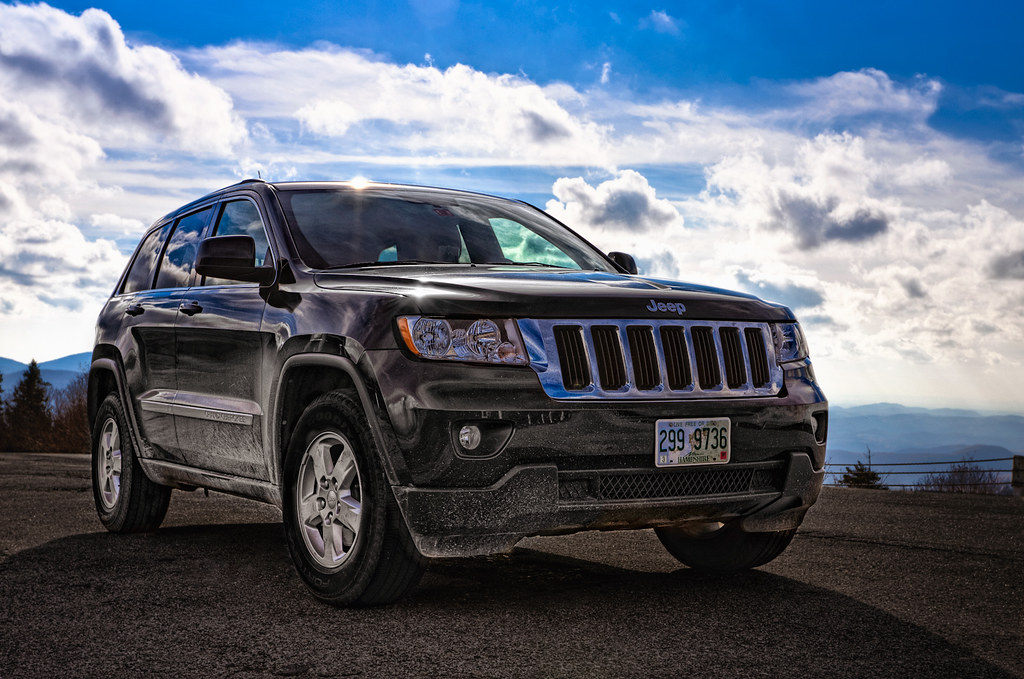
7. **Jeep Grand Cherokee**
The Jeep Grand Cherokee holds a revered position among SUV enthusiasts, cherished for its blend of rugged capability, comfortable amenities, and a distinctly American sense of adventure. It often straddles the line between mainstream and luxury, offering premium features and strong performance that appeal to a wide array of buyers. However, this popularity and perceived value can mask a substantial long-term financial commitment, particularly concerning its maintenance and repair needs.
Prospective owners often overlook the ‘hefty price tag’ associated with keeping a Grand Cherokee in prime condition over the long haul. The vehicle’s advanced four-wheel-drive systems, available powerful engines, and increasingly sophisticated electronics contribute to a complexity that necessitates specialized servicing. This complexity, while enhancing capability and comfort, inevitably leads to higher repair costs compared to more mechanically straightforward vehicles in its class.
Over the course of the first decade of ownership, Grand Cherokee drivers can anticipate shelling out approximately $10,872 on maintenance and repairs. This figure is not merely a number; it represents a significant premium, standing about $2,622 more than the average expenditure for SUVs across the market. Such a substantial difference highlights that owning a Grand Cherokee requires a budget that extends considerably beyond typical expectations for vehicle upkeep.
This elevated cost profile suggests a combination of factors, including more expensive replacement parts, higher labor rates for specialized diagnostics and repairs, and a higher frequency of issues that go beyond routine servicing. While the allure of its capabilities and comfort is undeniable, buyers must carefully factor in these considerable long-term expenses to avoid financial surprises and ensure the vehicle remains an enjoyable asset rather than a burdensome liability.
Car Model Information: 2024 Ford Mustang GT Premium
Name: Jeep Grand Cherokee
Manufacturer: Jeep
Production: 1992–present
ModelYears: 1993–present
Class: unbulleted list
BodyStyle: sport utility vehicle
Layout: unbulleted list
Chassis: Vehicle_frame#Uniframe
Categories: 2000s cars, 2010s cars, 2020s cars, All-wheel-drive vehicles, All Wikipedia articles written in American English
Summary: The Jeep Grand Cherokee is a range of mid-sized sport utility vehicles produced by American manufacturer Jeep. At its introduction, while most SUVs were still manufactured with body-on-frame construction, the Grand Cherokee has used a unibody chassis from the start.
Get more information about: Jeep Grand Cherokee
Buying a high-performing used car >>>
Brand: Jeep Model: Grand Cherokee
Price: $48,997 Mileage: 24,328 mi.
Read more about: Buyer’s Alert: 7 SUVs Prone to Major Breakdowns Before Hitting 80,000 Miles
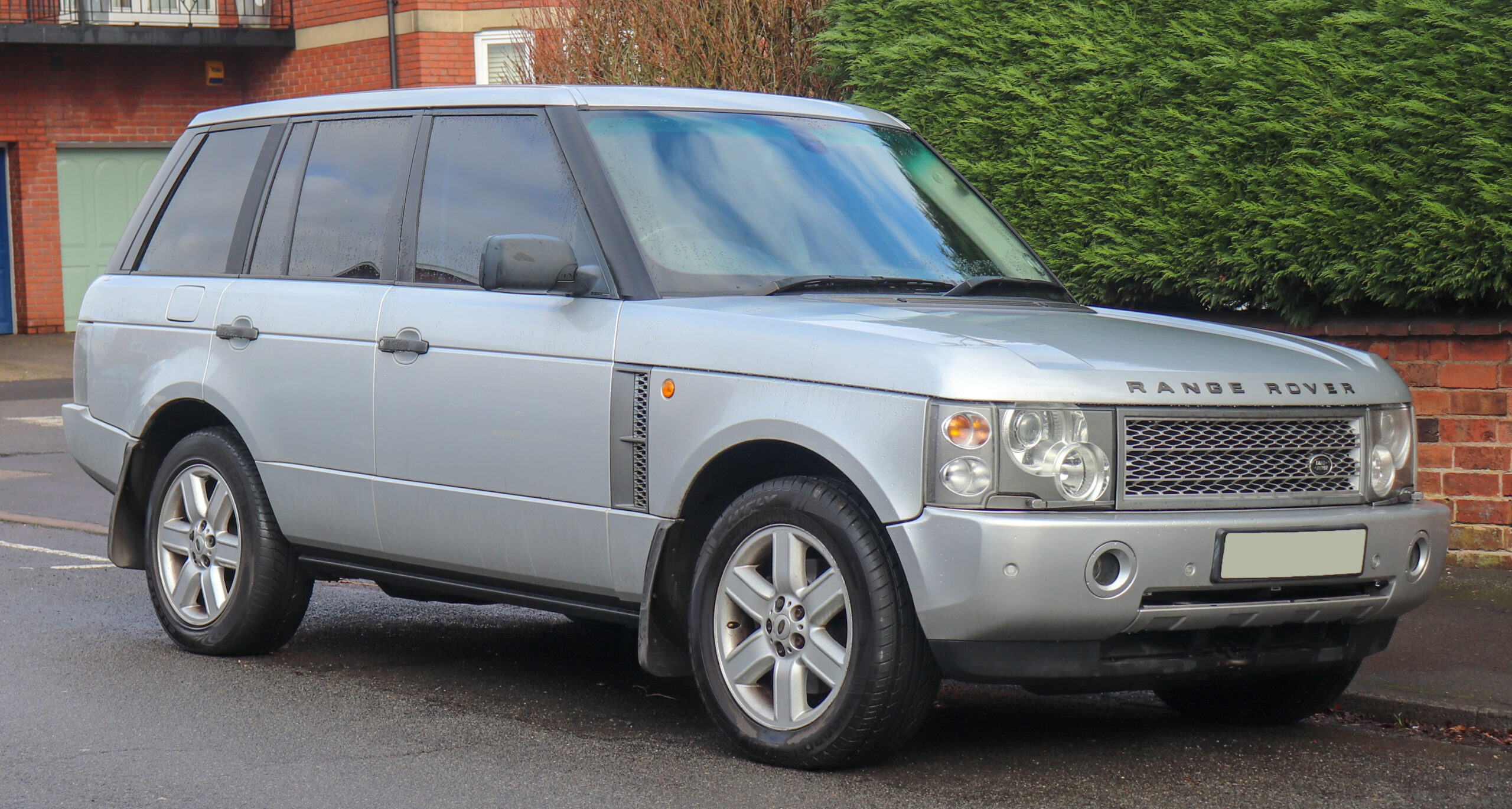
8. **Land Rover Range Rover**
The Land Rover Range Rover epitomizes the pinnacle of luxury SUVs, seamlessly blending aristocratic prestige with formidable off-road prowess. For many, it represents the ultimate aspirational vehicle, promising an extraordinary ownership experience characterized by refined comfort and exceptional capability. Yet, beneath this opulent veneer lies a stark financial reality: maintaining this iconic British SUV often requires a budget that is as substantial as its prestigious pedigree, particularly once the manufacturer’s warranty period concludes.
The fundamental engineering philosophy behind the Range Rover is a significant contributor to its extreme repair costs. Land Rover designs these vehicles to excel in diverse, challenging environments, from scorching deserts to freezing arctic conditions, and across rugged terrains. This uncompromising approach necessitates highly specialized components, which largely forego parts sharing with more mainstream vehicles. The absence of economies of scale means that replacement parts often carry premium pricing, reflecting their unique design and limited production rather than their intrinsic material or manufacturing costs, frequently leading to markups that surpass those of other luxury brands.
Adding to the financial burden is the Range Rover’s intricate technical complexity. Modern iterations integrate numerous electronic control units that govern virtually every aspect of the vehicle, from the advanced air suspension and terrain response system to luxurious features like the panoramic sunroof and electronically deploying door handles. Diagnosing issues within these interconnected and sophisticated systems demands specialized diagnostic equipment and factory-trained technicians, invariably inflating labor costs even before any repairs are initiated. The cascading nature of these systems often means that a single malfunctioning component can trigger fault codes across multiple systems, complicating diagnosis and increasing the time and expense required for troubleshooting.
Beyond the intrinsic design, the Range Rover’s well-documented reliability history perpetuates a cycle of high repair costs. Its reputation for frequent and sometimes unpredictable issues has deterred many independent repair shops from specializing in these vehicles, effectively channeling owners back to dealership service centers. At these dealerships, labor rates can easily exceed $200 per hour, and the limited competition in the repair market allows for premium pricing structures. This dynamic, coupled with one of the steepest depreciation curves in the automotive industry, paradoxically makes older Range Rovers more accessible to second or third owners who may be ill-prepared for the significant maintenance outlays awaiting them.
Specific failure points have become almost legendary among Range Rover owners. The sophisticated air suspension system, while providing an exceptional ride, is notoriously prone to developing leaks as vehicles age. Repairs, which often involve replacing the compressor or air struts, can cost upwards of $1,000 per corner, with comprehensive system replacements sometimes nearing $5,000. Other common, costly issues include electronic parking brakes, power tailgates, and climate control systems, each capable of adding thousands to the total cost of ownership over time. Furthermore, more severe powertrain issues, such as timing chain failures in supercharged V8 engines (particularly 2010-2013 models) or fuel system problems in diesel variants (costing up to $4,000), can lead to catastrophic damage. Transmission failures, especially in models utilizing the ZF 9-speed automatic, have been reported to necessitate complete replacements costing $8,000 or more, transforming what should be a durable luxury vehicle into an economically unsustainable proposition for many.
Read more about: Navigating the Automotive Minefield: 12 Cars That Could Cost You a Fortune in Repairs
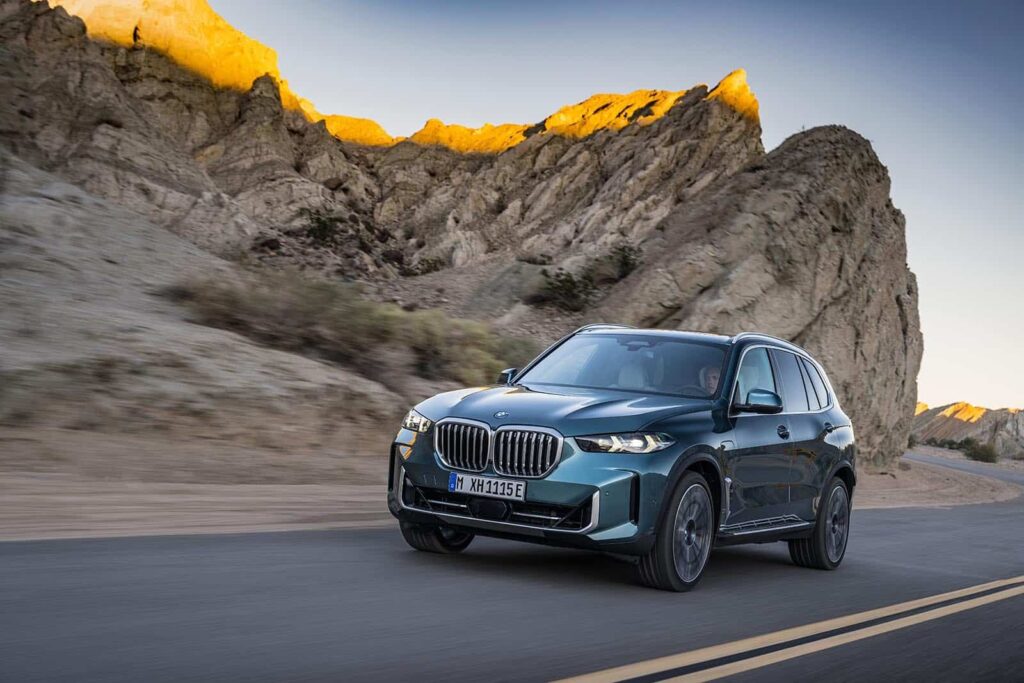
9. **BMW X5**
The BMW X5, marketed as a ‘Sports Activity Vehicle,’ embodies the demanding financial realities inherent in owning a luxury German SUV. While it delivers an undeniably exceptional driving experience, characterized by impressive performance and practical utility, this excellence often comes with a significant trade-off. After the initial warranty coverage expires, owners frequently encounter a succession of increasingly frequent and expensive repair episodes, revealing an engineering philosophy that prioritizes dynamic driving and feature richness over long-term maintenance affordability.
At the core of the X5’s substantial repair expenses is its intricate and complex design. BMW engineers these vehicles with a paramount focus on driving engagement, leading to the incorporation of sophisticated systems that demand precise calibration and utilize specialized components. The advanced suspension geometry, the intelligent all-wheel-drive system, and the high-performance powertrains all contribute to its superior road manners but simultaneously introduce a level of complexity that directly translates into higher repair costs when components inevitably fail. This design approach extends even to convenience features, where BMW often opts for innovative but mechanically complex solutions for functions that could be achieved through simpler, less costly means.
Parts pricing for the BMW X5 consistently reflects the brand’s premium market positioning. Components typically carry price tags that significantly surpass those for parts of comparable functionality in mainstream vehicles, with markups that extend beyond differences in material or production costs. This premium applies across the board, from routine maintenance items like brake pads and rotors to critical components such as control arms and electronic modules. Furthermore, the integrated nature of many of BMW’s systems often compounds costs, as the company frequently designs components that necessitate replacement as complete assemblies rather than allowing for the repair or replacement of individual elements. A prime example is the common issue of leaking valve cover gaskets on many X5 engines, which often requires the replacement of the entire valve cover assembly, including its integrated oil separator system, rather than just the gasket itself.
Perhaps one of the most significant pain points from a repair perspective is the X5’s sophisticated electrical architecture. The vehicle operates on an extensively networked system of control modules that communicate through multiple proprietary protocols. When electrical problems arise, accurate diagnosis frequently demands dealer-level equipment and specialized knowledge, which not only limits repair options but also dramatically increases costs. Moreover, many electronic components are strategically placed in areas that are vulnerable to heat and moisture, contributing to higher failure rates. A particularly notorious example from the E70 generation (2007-2013) involves the integration of critical control modules within the vehicle’s body structure, making them susceptible to catastrophic electrical failures from water damage, often originating from clogged sunroof drains or failed door seals, resulting in repair bills running into thousands of dollars.
Specific mechanical systems within the X5 have developed well-known reliability patterns that owners can almost anticipate as their vehicles age. The pneumatic suspension system, while providing an exceptional ride, frequently develops leaks that necessitate complete strut replacement, often at costs exceeding $1,000 per corner. The transfer case in all-wheel-drive models is prone to actuator and fluid leak issues between 80,000 and 100,000 miles, often requiring a complete replacement costing $3,000-$4,000. Cooling system components, notably water pumps and thermostats, tend to have shorter lifespans than those in mainstream vehicles, typically needing replacement every 60,000-80,000 miles at costs exceeding $1,000, including labor. Engine-specific issues further add to the financial burden, with the N63 twin-turbocharged V8 engines notoriously experiencing excessive oil consumption and premature timing chain wear, while diesel variants have faced high-pressure fuel pump failures that can lead to complete fuel system contamination, requiring replacements that can approach $10,000. Even the generally more reliable six-cylinder models can develop valve cover and oil filter housing gasket leaks that, while not catastrophic, require extensive labor to access and repair properly. These predictable and costly failure points mean that many X5s are traded in before they even reach the 100,000-mile mark, as accumulated repair needs quickly outweigh the vehicle’s depreciating resale value.
Car Model Information: 2022 BMW X5 xDrive40i
Name: BMW X5
Manufacturer: BMW
Class: Mid-size,luxury vehicle,crossover SUV
BodyStyle: SUV
Production: 1999–present
Layout: Front-engine, four-wheel-drive layout,Front-engine, rear-wheel-drive layout
Categories: 2000s cars, 2010s cars, All-wheel-drive vehicles, All articles with unsourced statements, Articles with short description
Summary: The BMW X5 is a mid-size luxury crossover SUV produced by BMW. The X5 made its debut in 1999 as the E53 model. It was BMW’s first SUV. At launch, it featured all-wheel drive and was available with either a manual or automatic gearbox. The second generation was launched in 2006, and was known internally as the E70. The E70 featured the torque-split capable xDrive all-wheel drive system mated to an automatic gearbox. In 2009, the X5 M performance variant was released as a 2010 model.
BMW marketed the X5 officially as a “Sports Activity Vehicle” (SAV), rather than an SUV, to indicate its on-road handling capability despite its large dimensions. The X5 signaled a shift away from the utilisation of body-on-frame construction, in favour of more modern monocoque chassis construction. Although the Mercedes-Benz M-Class was introduced more than a year prior to the X5, the X5 was the first to utilise a monocoque chassis. The M-Class used body-on-frame construction until its second generation.
The X5 is primarily manufactured in North America, at BMW Group Plant Spartanburg. Assembly operations also took place in Russia by Avtotor until February 2022, along with operations in India, Indonesia, Malaysia, and Thailand. The X5 is also modified for armoured security versions, at the BMW de México Toluca plant.
The automaker’s SAV series, which was started by the X5, has expanded with derivations of other number-series BMWs. This began in 2003 with the X3, and continued in 2008 with the X6 (which shares its platform with the X5).
Get more information about: BMW X5
Buying a high-performing used car >>>
Brand: BMW Model: X5
Price: $41,491 Mileage: 39,525 mi.
Read more about: Navigating the Automotive Minefield: 12 Cars That Could Cost You a Fortune in Repairs
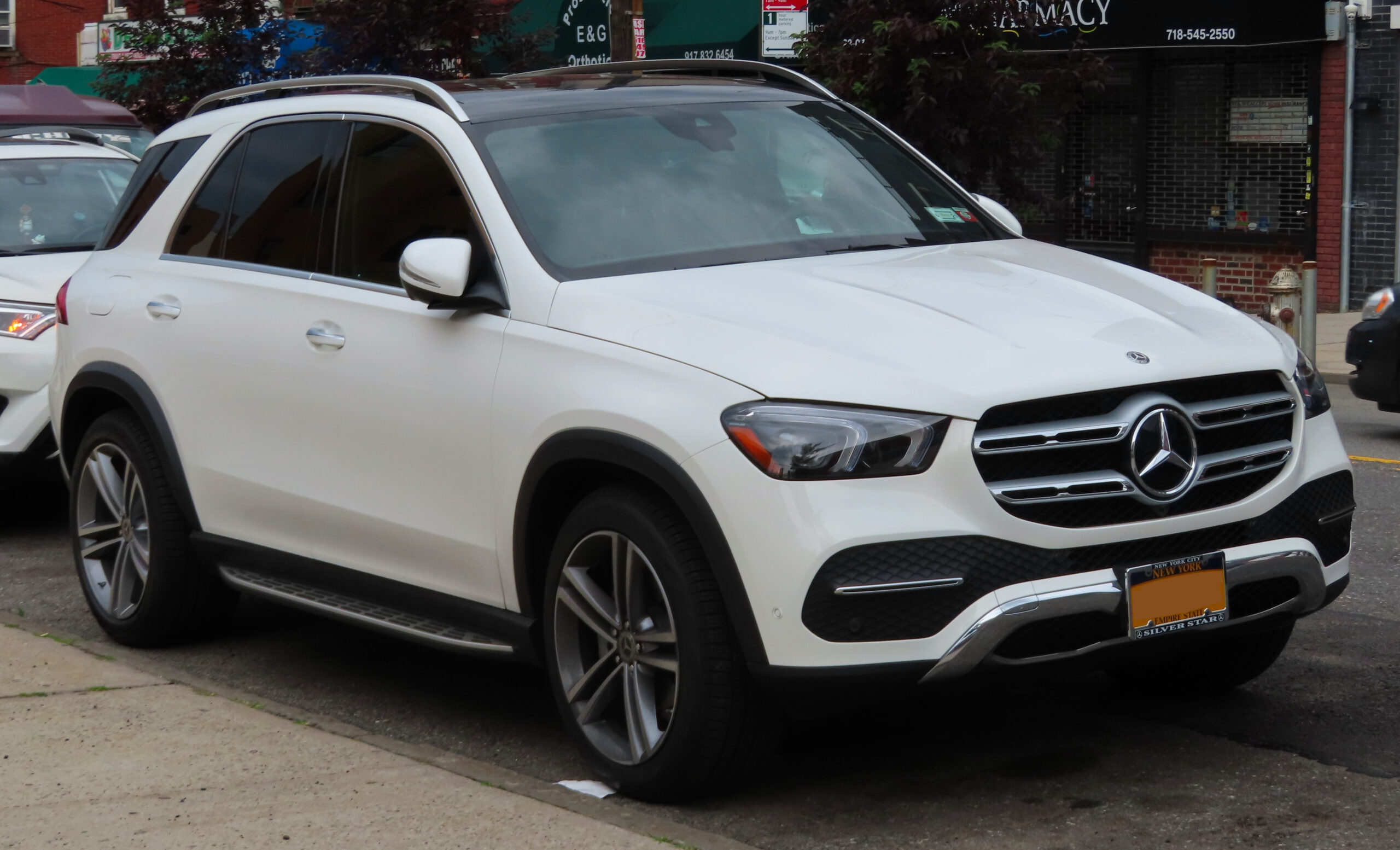
10. **Mercedes-Benz GLE**
Previously known as the ML-Class, the Mercedes-Benz GLE stands as a paragon of German luxury SUV engineering, offering an exceptional blend of comfort, advanced technology, and unmistakable prestige. However, this sophisticated vehicle also serves as a prime illustration of the extreme repair costs that are often inextricably linked to such high-end automotive craftsmanship. The GLE’s engineering priorities, focused on delivering peak performance and a rich array of features, often overshadow considerations for long-term maintenance affordability, leading to substantial financial demands from its owners.
The genesis of the GLE’s formidable repair expense profile lies in Mercedes-Benz’s fundamental engineering philosophy of extensive systems integration. Rather than designing components to operate in isolation, Mercedes orchestrates deeply interconnected systems where numerous modules constantly communicate across proprietary networks. While this approach enables impressive functionality and seamless user experiences, it introduces significant diagnostic complexities when issues inevitably arise. A single component failure can cascade, generating fault codes across multiple seemingly unrelated systems, demanding exhaustive troubleshooting to pinpoint the root cause. This intricate diagnostic process alone can significantly inflate labor costs, with many service centers charging several hours just to accurately identify the underlying problem before any physical repair work can even begin.
Parts pricing for the GLE similarly reflects Mercedes-Benz’s premium brand positioning, with individual components often carrying substantial markups compared to those for mainstream vehicles. This pricing strategy impacts everything from routine consumables like brake pads and filters to major mechanical assemblies. For instance, a standard brake service that might cost between $300-$400 on a typical SUV can easily surpass $1,000 on a GLE, especially on models equipped with high-performance braking systems, when using genuine Mercedes parts. The company’s controlled parts distribution, often making many components exclusively available through dealership channels, further reinforces this premium pricing and limits cost-saving alternatives.
One of the most notoriously problematic and expensive repair scenarios for GLE owners involves its air suspension system. The AIRMATIC suspension, while delivering an unparalleled blend of ride comfort and dynamic adjustability, relies on complex pneumatic components that are susceptible to developing leaks as the vehicle ages. When these failures occur, repairs seldom involve a simple component swap; instead, the interconnected nature of the system frequently necessitates comprehensive replacement of multiple parts. Complete air suspension rebuilds can easily exceed $4,000-$5,000, prompting some owners to consider converting to conventional coil springs a costly alternative that sacrifices the original ride quality but eliminates the prospect of recurring, high-cost air suspension failures.
Electronic system failures represent yet another significant financial burden for GLE owners. The vehicle is equipped with dozens of control modules, meticulously managing everything from engine performance to an extensive suite of convenience features, all communicating via the robust CAN-bus network. Mercedes has a reputation for implementing advanced technology, and while this provides a sophisticated driving experience, it also means that diagnosing and repairing electrical issues requires specialized expertise and tools. Although the vehicle’s electronic architecture follows logical organizational principles, facilitating accurate diagnosis to some extent, the sheer number and integration of these modules mean that even ‘targeted repairs’ can involve complex procedures and, consequently, high labor costs. The cumulative effect of such specialized repairs and the premium cost of electronic components can make the GLE a substantial long-term financial commitment.
Read more about: A Week of Legacy: Unpacking the Heartfelt Tributes and Personal Milestones Shared by NBA Icon Magic Johnson
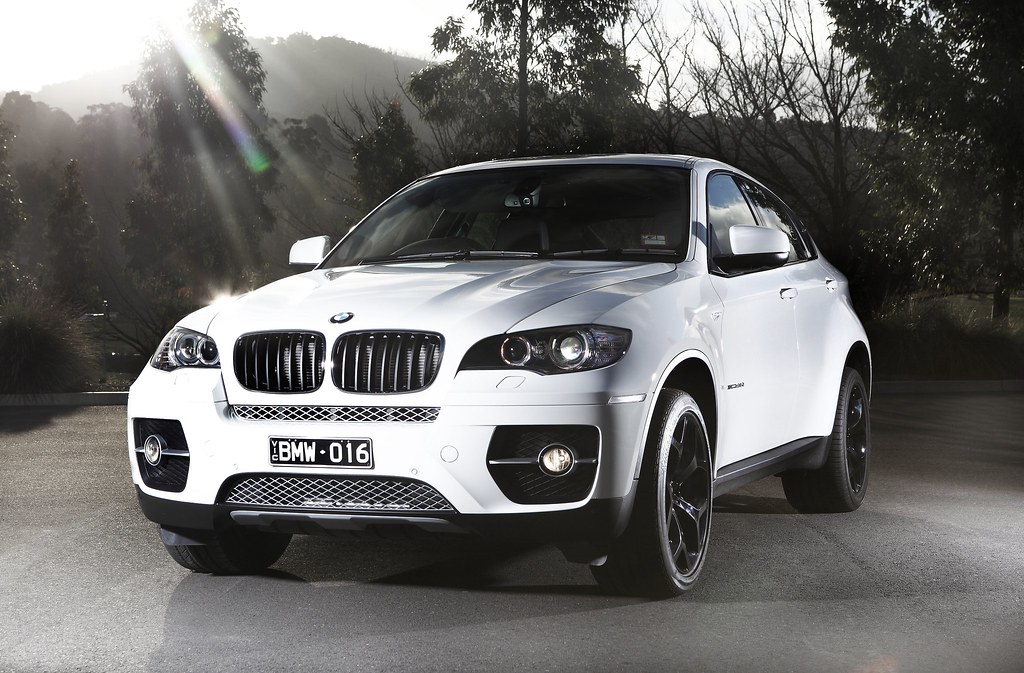
11. **BMW X6 M**
The BMW X6 M is a striking embodiment of luxury and performance, blending the aggressive aesthetics of a coupe with the elevated stance of an SUV. It promises exhilarating driving dynamics and sophisticated style, appealing to those who demand top-tier performance from their utility vehicle. However, this fusion of high-performance engineering and luxury segmentation comes with a stark financial reality: the BMW X6 M is consistently identified as one of the most expensive SUVs to maintain, with owners typically facing significant repair bills over its lifespan.
Over the course of a decade, owners of a BMW X6 M can expect to incur approximately $18,000 in maintenance and repair costs. This staggering figure is not an anomaly but a direct consequence of the vehicle’s high-performance design. The ‘M’ designation signifies an even higher level of engineering complexity and specialized components compared to a standard X6 or even an X5. These bespoke, high-stress parts — from reinforced transmissions and specialized braking systems to finely tuned, powerful engines — are designed for extreme conditions and dynamic driving, making them inherently more expensive to produce, replace, and service.
The complexity intrinsic to a luxury performance SUV further contributes to these exorbitant costs. The X6 M is laden with advanced electronics that manage everything from its adaptive suspension and all-wheel-drive system to its sophisticated infotainment and driver-assistance features. These intricate systems require highly specialized diagnostic equipment and technicians with specific expertise, translating directly into elevated labor rates. Simple repairs can become extensive undertakings due to the need to access deeply integrated components, requiring significant disassembly that adds both time and expense to any service visit.
Drawing parallels with other vehicles in the ‘SUVs That Bleed Money’ category, the X6 M’s maintenance profile is characterized by similarly challenging economics. Its components are often proprietary, limiting choices for more affordable aftermarket parts and driving owners back to dealerships with premium pricing. The sophisticated mechanical and electronic arrangements transform even routine services into wallet-draining ordeals, with minor failures having the potential to cascade into major expenses. The $18,000 decade-long cost explicitly signals a high probability of encountering multiple substantial interventions that will test the financial preparedness of any owner.
When considering a high-performance luxury SUV like the BMW X6 M, prospective buyers must recognize that the initial purchase price represents only a fraction of the total investment. The joy of its unparalleled performance and style must be weighed against the very real and substantial long-term financial commitment required for its specialized maintenance and inevitable repairs. Thorough financial planning and a deep understanding of these potential expenditures are not just advisable; they are absolutely essential to ensure a sustainable and enjoyable ownership experience.
Car Model Information: 2024 Ford Mustang GT Premium
Name: BMW X6
Caption: BMW X6 (G06)
Manufacturer: BMW
Production: December 2007 – present
ModelYears: 2008–present
Class: Executive car,crossover SUV
BodyStyle: coupé SUV
Layout: Front-engine, four-wheel-drive
Related: BMW X5
Categories: 2000s cars, 2010s cars, 2020s cars, All-wheel-drive vehicles, All Wikipedia articles written in British English
Summary: The BMW X6 is a mid-size luxury crossover SUV by German automaker BMW. The BMW X6 is the originator of the sports activity coupé (SAC), referencing its sloping rear roof design. It combines the attributes of an SUV (high ground clearance, all-wheel drive and all-weather ability, large wheels and tires) with the stance of a coupé (styling featuring a sloping roof). It is built in BMW’s North American plant in Greer, South Carolina alongside the BMW X5, whose platform it shares. Prior to the release of the X7, the X6 was considered a flagship SUV for BMW.
The first generation (E71) was released for sale in April 2008 for the 2008 model year, while the second-generation X6 (F16) was launched at the Paris Motor Show in 2014. The third-generation X6 was revealed in July 2019.
Get more information about: BMW X6
Buying a high-performing used car >>>
Brand: BMW Model: X6 M
Price: $48,997 Mileage: 24,328 mi.
Read more about: Navigating the Automotive Minefield: 12 Cars That Could Cost You a Fortune in Repairs
As we conclude this comprehensive guide, it’s clear that the path to SUV ownership is paved with more than just the initial purchase price. The journey can lead to either a smooth, economical ride or a bumpy, expensive expedition, depending largely on the model you choose. For every practical hauler that offers surprisingly low repair costs, there are luxury and performance behemoths eagerly waiting to drain your wallet with their complex engineering, proprietary parts, and a penchant for big-ticket fixes. Making an informed decision isn’t just about finding the perfect blend of features and aesthetics; it’s about shrewdly evaluating the hidden financial realities that unfold over a decade of ownership. By carefully researching a vehicle’s reliability track record, understanding its typical maintenance demands, and budgeting for potential major repairs, you empower yourself to steer clear of the financial sinkholes and truly enjoy the versatility and adventure an SUV promises, without the looming dread of an exorbitant repair bill. Choose wisely, and your SUV can be a source of freedom, not financial friction.

